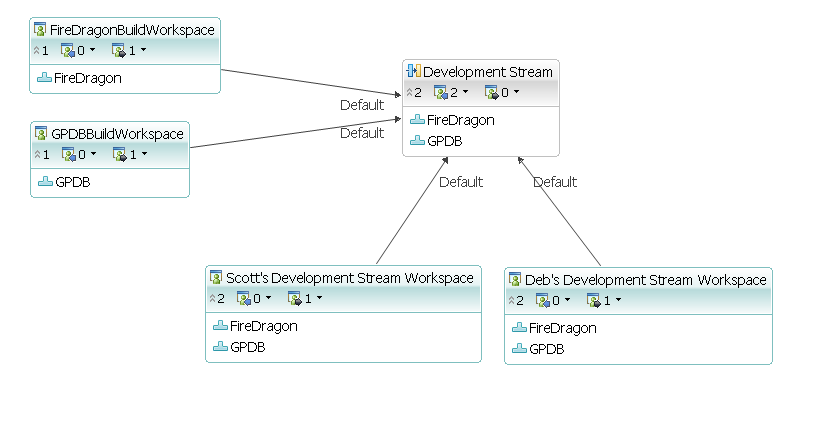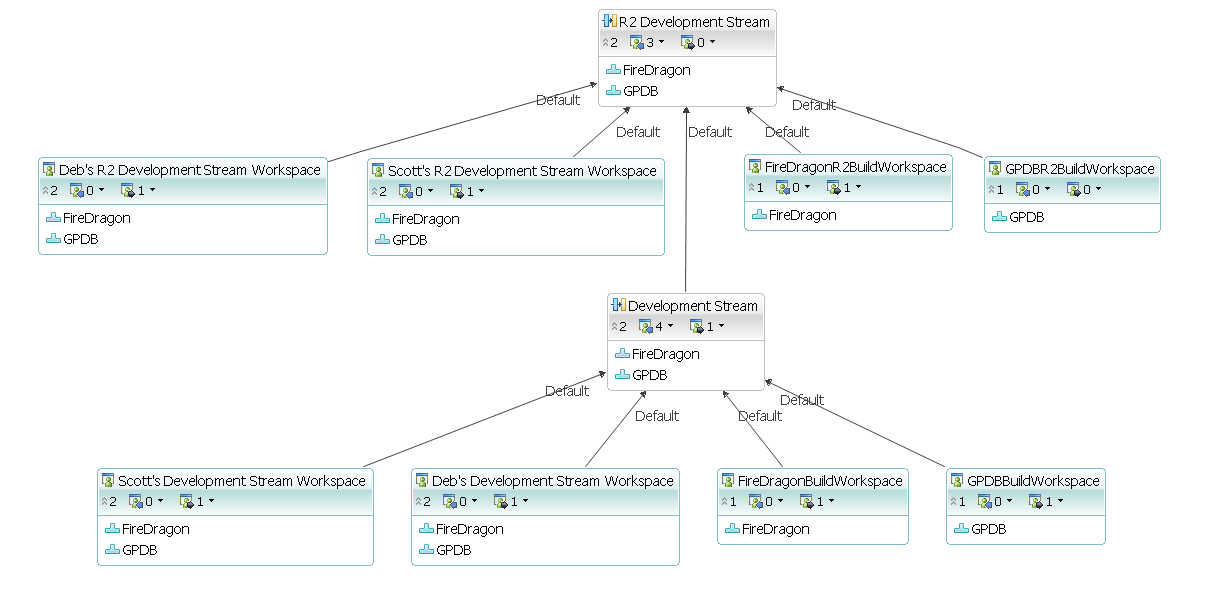Using the Release Plugin with the Jazz SCM provider.
Maven Releases
The normal Maven process of creating a release using the Maven Release Plugin involves a two step process.
The first step, mvn release:prepare consists of the following phases:
- check-poms
- scm-check-modifications
- check-dependency-snapshots
- create-backup-poms
- map-release-versions
- input-variables
- map-development-versions
- rewrite-poms-for-release
- generate-release-poms
- run-preparation-goals
- scm-commit-release
- scm-tag
- rewrite-poms-for-development
- remove-release-poms
- run-completion-goals
- scm-commit-development
- end-release
The tag operation should, as per good SCM practices and Maven best practices, create a tag of just that module, and any sub modules in a multi-module project.
The second step, mvn release:perform, consists of the following phases:
- verify-completed-prepare-phases
- checkout-project-from-scm
- run-perform-goals
The scm create snapshot command, used to implement the Maven SCM Tag command, creates an implicit baseline of *ALL* components within the repository workspace. For this reason, it is *very strongly* recommended that only a single component reside in the repository workspace being used to perform the release.
A simple suggestion is to use a naming standard of: <ComponentName>BuildWorkspace for Repository Workspace names used to perform releases.
Or, put in a Maven context, tagging multiple projects at the same time, makes absolutely no sense.
Now, the question becomes, how do we organise our repository workspaces?
Repository Workspace Organisation
A suggestion of how a developer can work with Maven, multiple components and multiple developers is shown below.

The important thing to note, is that a developer can have multiple components, multiple flow targets. They can quite easily use the usual mvn clean install from their Eclipse workspace.
They should not, however, attempt to run the release plugin from these environments.
It is very strongly recommended that a separate repository workspace, containing just one component, the component to be released, be set up for exactly this purpose. This repository workspace should only have one flow target, which would normally be a stream. Should the repository workspace have multiple flow targets, the flow target marked as "current" will be the one where the changes are flowed to. However, this provider also works perfectly well with a standalone repository workspace, ie, no flow targets.
This means that the scm settings in the pom must to be configured for the build repository workspace, not the developer's repository workspace. As the developers should not be performing a release, this will not effect them; they will not need to modify the scm section in the pom to point to their specific repository workspace.
This is what the scm section of the pom.xml file could look like:
<scm>
<url>https://rtc:9444/jazz:GPDBBuildWorkspace</url>
<connection>scm:jazz:https://rtc:9444/jazz:GPDBBuildWorkspace</connection>
<developerConnection>scm:jazz:https://rtc:9444/jazz:GPDBBuildWorkspace</developerConnection>
</scm>As the username and password are not in the pom.xml, they must be obtained from the user's settings.xml file. This is a sample of what the server section of the settings.xml file could look like:
<servers>
<server>
<id>rtc:9444</id>
<username>build</username>
<password>build</password>
</server>
</servers>In this example, we are using the build user. The GPDBBuildWorkspace would be owned by the build user.
Working with Multiple Streams
The next step in the normal evolution of a software project would be to start development work on the next release or version of the software. Let's call it Release 2. Ordinarily, you would create a branch to operate in. In Jazz SCM, we create a Stream.
The image below illustrates how this can be achieved:

All of the initial repository workspaces flow into the development stream (all implicitly Release 1). When the new stream for release 2 has been created, the (Release 1) Development Stream is modified so that it has a flow target of the Release 2 Development Stream. The repository workspaces for the Release 2 work are then created and their flow targets flow back to the Release 2 Development Stream.
The repository workspaces for the build are again created, and the scm section of the pom.xml file could look like:
<scm>
<url>https://rtc:9444/jazz:GPDBBuildR2Workspace</url>
<connection>scm:jazz:https://rtc:9444/jazz:GPDBBuildR2Workspace</connection>
<developerConnection>scm:jazz:https://rtc:9444/jazz:GPDBBuildR2Workspace</developerConnection>
</scm>Working with the Release Plugin
We are able to use the release:prepare and release:perform goals in the one invocation, however, due to the sandbox within a sandbox issues discussed, we need to use the workingDirectory option.
Here is a sample:
mvn -B -Dresume=false -DworkingDirectory=/tmp/maven release:prepare release:perform

